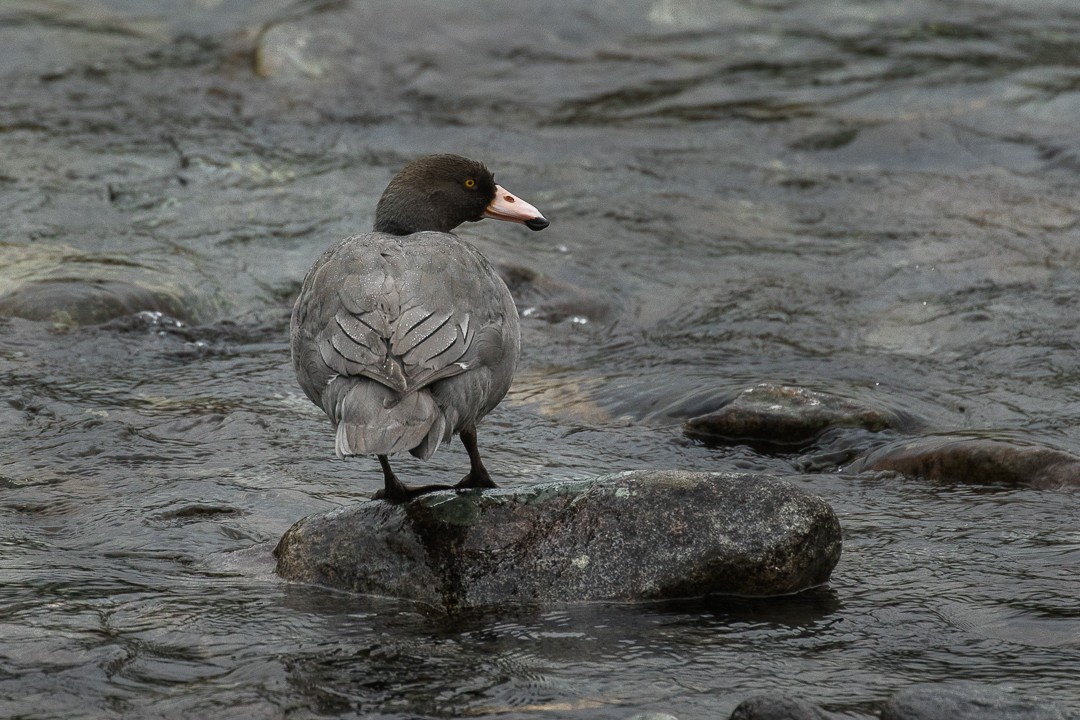Blue Duck
A species of Blue Duck Scientific name : Hymenolaimus malacorhynchos Genus : Blue Duck
Blue Duck, A species of Blue Duck
Botanical name: Hymenolaimus malacorhynchos
Genus: Blue Duck
Content
Description People often ask General Info
 Photo By Francesco Veronesi , used under CC-BY-SA-2.0 /Cropped and compressed from original
Photo By Francesco Veronesi , used under CC-BY-SA-2.0 /Cropped and compressed from original Description
The blue duck is 53 to 54 cm (21–21 in) long and varies in weight by sex. Females are smaller than males, weighing 680–870 g (24–31 oz), whereas the males weigh 820–1,077 g (28.9–38.0 oz). The plumage is a dark slate-grey with a greenish sheen on the head, a chestnut-flecked breast. The outer secondaries are tipped with white and the inner ones have black margins. The plumage of the two sexes are mostly the same, although the female has slightly less chestnut in the chest. The pinkish-white bill has fleshy flaps of skin hanging from the sides of its tip. The blue duck hatches with a green beak for just 8 hours after hatching; after which it then develops its final colour. 
Size
54 cm
Colors
Brown
Black
Gray
Life Expectancy
7 years
Nest Placement
Floating
Feeding Habits
Blue Duck predominantly eats aquatic invertebrates, favoring caddisfly larvae. Occasionally blue Duck also consumes berries and shrub fruits. Blue Duck forages by dabbling in fast-flowing rivers, a unique dietary preference among ducks.
Habitat
The blue Duck prefers habitats of temperate, fast-flowing rivers and streams with steep gradients, primarily within forested regions at elevations of 82 to 1050 meters. They need a stable environment with narrow channels, native riparian forests, and large woody debris for roosting. Their presence in alpine tarns, lakes, and estuarine zones is infrequent and non-breeding.
Dite type
Aquatic invertebrate eater
People often ask
General Info
Feeding Habits
Bird food type
Behavior
This species is an endemic resident breeder in New Zealand, nesting in hollow logs, small caves and other sheltered spots. It is a rare duck, holding territories on fast flowing mountain rivers. It is a powerful swimmer even in strong currents, but is reluctant to fly. It is difficult to find, but not particularly wary when located. 
Species Status
ENDANGERED. Previously considered Near Threatened, as numbers very reduced and declining.